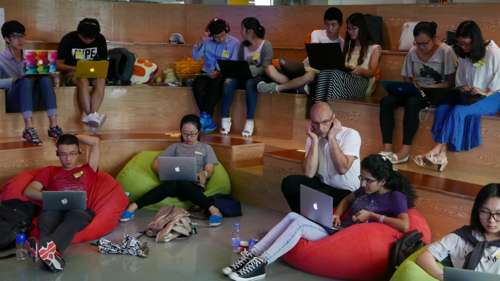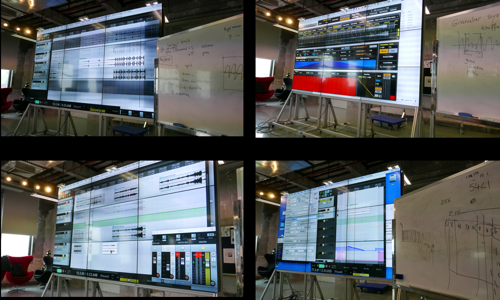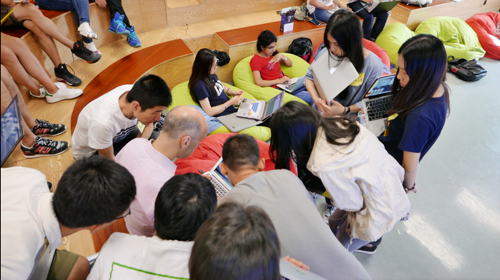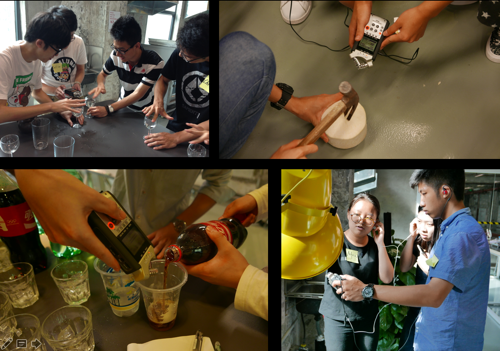Tell a personal story through sound
multi-day workshop on the creative use of sound
(Its structure can be adapted to the institutional needs and amount of time, participants can devote to it)
Through the creation of a personal sound story, students are invited to discover new forms of communication and relating ideas. Perception of sound, as well as creative use of sound, will be at the core of our discussions. We will learn to shape sounds in order to express specific ideas.
Each student will write a personal short-story as a script. They focus not on the visual aspects of things but should describe their sounding scene with adjectives particularly spelling out the sounding environment and qualities.
Every student will work on their laptops and headphones. We are using
Reaper software for multichannel audio editing and
Twisted Wave (Mac) or Audacity (Mac/PC) for sound editing.
Each student group (2 students) needs one portable Zoom H4 recorder, one SD card, and one SD card reader.
- What is a sound?
- What is a story?
- What is a sounding image?
- What do we imagine when we hear a sound?
- Listening games
- Introduction to the portable recording device.
Session 2
- Energy models.
- The use of the microphone as an instrument.
- Creation of a sound sequence in front of the microphone.
Homework
Students pair up in groups of two. Each one uses one portable recorder and creates two contrasting sound-sequences to evoke two particular energy models. Copy these sequences also onto your laptop and the thumb drive.

Session 3
- Listening to all energy sequences and discussion.
- The mystery factor.
- Introduction to Twisted Wave and Reaper.
Homework
Pair up with another student from the group. Re-record two energy sequences.
Session 4
- Listening to all energy sequences and discussion.
- Editing, reversing, volume, pan.
- Combination of two sound sources into a sequence.
- Loading energy sequences into Reaper and editing them.
- Introduction to the writing of a sound story.
- Pairing up students into their final work-duos.

Session 5
- Practical group recording session.
Homework
Each group writes a sound story – not more than 1⁄2 a page.
Upload your sound story to the class blog/shared drive.
Every student reads all sound-stories before next class. Pick your favorite sound-story and prepare to tell us WHY you think it is a promising starting point for a sound piece.
Gather sounds in your environment, which will become location elements of your sound story. Clean them and classify them into context and element sounds. They should be ready-to-use samples. Select your favorite sounds from those recordings and prepare to tell us, why you like them and how they relate to your sound story.
Session 6
- Discussion of the sound stories.
- Listening to the favorite environmental sounds.
- Starting to build the beginning of a sound-story together.

Session 7
- Continuous and ambient sounds.
- Discrete sounds as memory markers.
- Articulations.
- Layering of ambient sounds with discrete elements to suggest agency and narrative.
Homework
Each group creates a first draft of the sound-stories.
Session 8
- Listening to all sound-stories and discussion.
- Practical workshop to incorporate class critique.
Homework
Finalize your sound story
Session 9
Listening to all sound stories and group discussion.
LEARNING OUTCOMES
Foster creativity in an area no student has any experience with. Even those with prior music education will be in front of a new form of expression. Everybody will be a beginner and needs to let prejudice behind.

